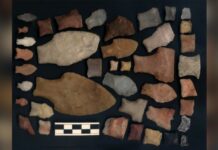Scientists have long dreamed of building a quantum internet—a network so secure that its data would be unbreakable. But one crucial piece of the puzzle seemed impossible: sending entangled particles of light up from Earth to satellites in orbit. Now, researchers believe this hurdle has been cleared.
Entangled photons are like tiny cosmic twins; measuring one instantly affects the other, no matter how far apart they are. This “spooky action at a distance,” as Einstein famously called it, is the key to building unhackable quantum communications. Currently, we can send these entangled photons down from satellites to ground stations, but sending them in the opposite direction was thought to be impossible due to signal instability during the journey through Earth’s atmosphere.
A new study by a team at the University of Technology Sydney (UTS) throws this assumption into question. Their research demonstrates that transmitting quantum signals from Earth to space is feasible, challenging what was previously considered the boundaries of physics.
“We modeled how two single photons fired from separate ground stations could meet in a precise way with a satellite orbiting 500 kilometers above Earth,” explains Simon Devitt, a UTS physicist involved in the study. “This ‘meeting’ would trigger quantum interference.”
The model considered numerous real-world challenges: atmospheric conditions, stray light, sunlight reflections off the Moon—even imperfections in the optical equipment used for aiming. Surprisingly, the results showed that an uplink is possible.
Why This Matters: A Quantum Internet Closer Than We Think
So why is this breakthrough so significant? Imagine a global network powered by unhackable quantum communication. That’s the promise of a quantum internet.
Today, satellites generate entangled photon pairs and send them down to Earth. While technically possible to send them up, doing so from ground stations makes much more sense.
Ground-based equipment has the power needed to create trillions upon trillions of these photon pairs per second—far exceeding what a satellite could manage. These entangled photons are then beamed up to satellites for distribution across wider networks.
“A satellite needs only a compact optical unit to interfere incoming photons and report the result,” Devitt explains. “It doesn’t need complex, power-hungry equipment to create all those photons.” This approach drastically reduces both cost and size, making quantum internet infrastructure more practical.
The study acknowledges that this system would initially function best at night, avoiding interference from sunlight. However, careful calibration could extend operation during the day. This limitation is a stepping stone rather than an insurmountable obstacle.
“Future tests could use drones or balloons as receivers,” Devitt suggests. “We’re getting closer to making quantum entanglement a commodity like electricity—invisible to users but powering the networks of tomorrow.”
The development of this two-way quantum communication opens exciting possibilities for secure data transmission and distributed quantum computing in the future.







































































